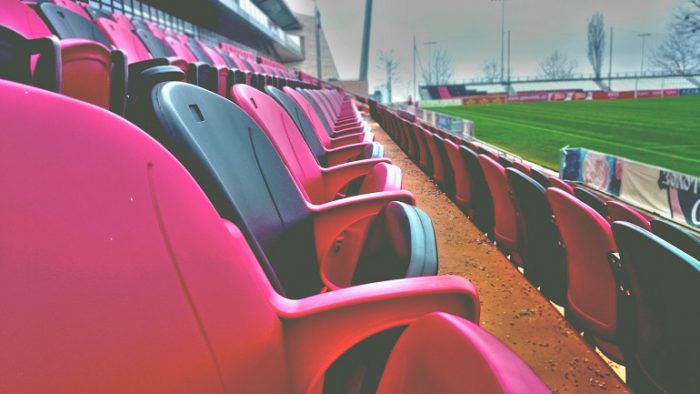Clean Energy Programs, as Explained by Baseball
Written by Allison Donnelly, ERS for Zondits, March 28, 2018
Suppose you wanted to improve how your community or customers use energy. A common way to do that is to create a program that offers incentives to decrease the cost of buying a more expensive – but better performing – piece of equipment, such as a new high-efficiency A/C unit, solar panels, combined heat and power (CHP), or even a battery. There are now thousands of these programs across the US, run by hundreds of utilities, state organizations, municipalities, and nonprofits, targeted at different types of customers and showcasing a wide variety of technologies.
I spend most of my workdays working with these programs. As an evaluator, I take the programs apart and look at each piece to determine how effective the program is at achieving its goals, and how it could be even better. During presentations, I’ve often used pop culture references to explain how programs work. It just so happens that many of those references are about baseball. So, to celebrate Opening Day, I’ve compiled a list of my favorite baseball quotes and what they can tell us about clean energy programs.
“If you don’t know where you’re going, you might not get there.” – Yogi Berra
DESIGN. Programs are put in place for a purpose – they are trying to achieve one or more key goals, such as energy savings, customer bill reduction, clean energy generation, peak demand reduction, job creation, greenhouse gas reductions, and more. Everything that happens after that point should be designed to achieve that purpose. If the program’s goals aren’t clearly defined, if progress toward those goals isn’t tracked, or if the program’s actors are going after competing goals, then the program won’t perform as well as it could.
“The way a team plays as a whole determines its success. You may have the greatest bunch of individual stars in the world, but if they don’t play together, the club won’t be worth a dime.” – Babe Ruth
ORGANIZATION. To be able to reach customers and save energy, most programs involve many different staff members, contractors, and partner organizations. For example, a program offering incentives to commercial customers to purchase high-efficiency HVAC equipment might have an internal program manager and staff, a utility marketing team, an external company that implements the program (outreach, processing rebates, etc.), a network of equipment vendors who sell the efficient products, and organizations like building operator associations who can help spread the word among their members. Good programs are well-connected and well-organized, which helps especially with the next component.
“If you build it, they will come.” – Field of Dreams
MARKETING. This is sadly untrue when it comes to clean energy programs. You must build the program, and then make sure everyone knows it’s there, and then convince them to participate. To participate in one of these programs, the customer needs two things: awareness and motivation. The customer must know that the incentive exists by finding out through a utility bill insert/email, a contractor, a poster at a store, social media, or a variety of other methods. Then they need to be convinced to participate, which is why program administrators must understand what customers want and how to message for it.
“Good hitters don’t just go up and swing. They always have a plan. Call it an educated deduction. You visualize. You’re like a good negotiator. You know what you have, you know what he has, then you try to work it out.” – Dave Winfield
IMPLEMENTATION. The program has been designed, staffed, and marketed – now it’s time to run it. Depending on the program, this might involve continued customer outreach, walk-though site visits or audits, training opportunities, application processing, engineering review, measure installation, inspections, QA/QC, incentive payment, and more. Programs often have detailed plans listing out tasks and responsibilities so that the effort runs smoothly.
“Baseball fans love numbers. They love to swirl them around their mouths like Bordeaux wine.” – Pat Conroy
DATA TRACKING. Clean energy programs are often awash in data – at a minimum, they’ll have listings from every rebate they process, but they often have detailed information for more complex projects to calculate the energy savings or generation. The data is key for demonstrating progress against the program’s goals and for identifying any challenges as they come up. Data is also reported – but rather than on baseball cards or newspaper listings, it will usually be in the form of weekly reports to the program staff and annual reports to regulators.
“Baseball is the only field of endeavor where a man can succeed three times out of ten and be considered a good performer.” – Ted Williams
PERFORMANCE. Achievement of expectations is usually tracked at both the project and program level. At the project level, inspections, measurement and verification (M&V), and evaluations are used to ensure that projects result in the amount of savings or generation that the program is claiming toward its goals. At the program level, regular reporting and evaluations show how the program is progressing against its goals and other key performance indicators (KPIs). This allows the program staff and other key stakeholders like regulators to assess the intervention’s effectiveness.
“I’m not only a player of the game. I’m a student of the game. I watch and learn.” – Roberto Velazquez Alomar
EVALUATION. Periodic reviews called evaluations are used to assess the program’s performance and highlight ways that the program could achieve even more with the resources it has. Program staff may also undertake informal reviews of their internal processes. The findings and recommendations from evaluations and reviews help programs stay nimble in the face of changing markets and continue to meet the needs of their customers.
